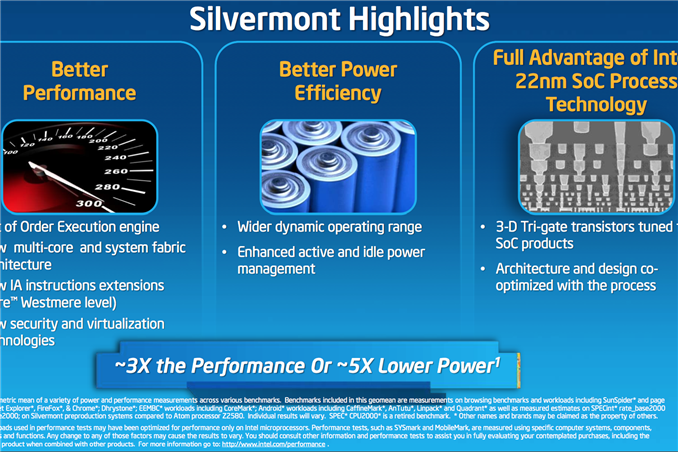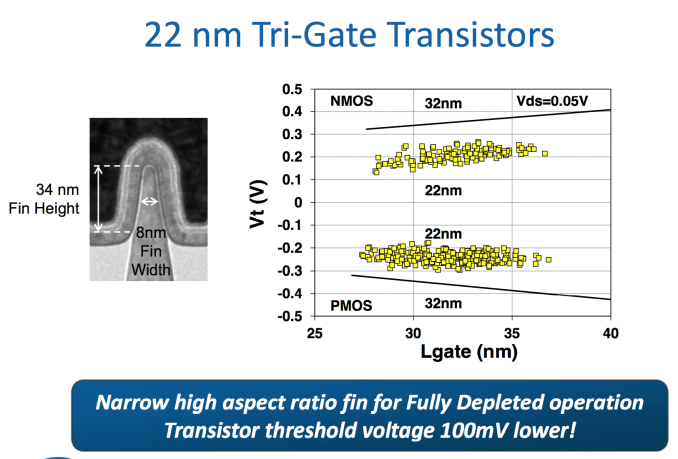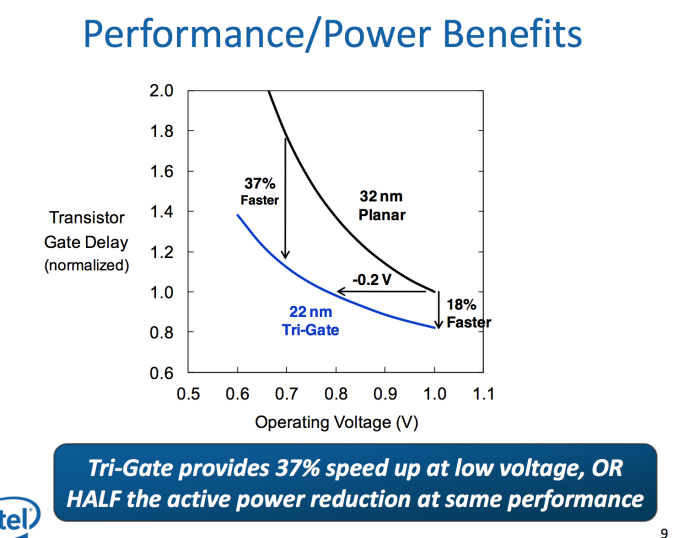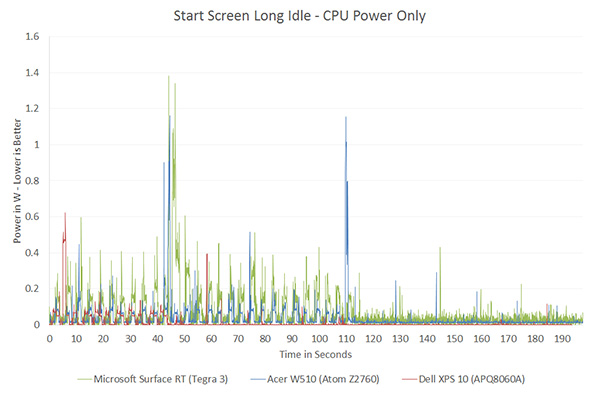Intel’s Silvermont Architecture Revealed: Getting Serious About Mobile
by Anand Lal Shimpi on May 6, 2013 1:00 PM EST- Posted in
- CPUs
- Intel
- Silvermont
- SoCs

The most frustrating part about covering Intel’s journey into mobile over the past five years is just how long it’s taken to get here. The CPU cores used in Medfield, Clover Trail and Clover Trail+ are very similar to what Intel had with the first Atom in 2008. Obviously we’re dealing with higher levels of integration and tweaks for further power consumption, but the architecture and much of the core remains unchanged. Just consider what that means. A single Bonnell core, designed in 2004, released in 2008, is already faster than ARM’s Cortex A9. Intel had this architecture for five years now and from the market’s perspective, did absolutely nothing with it. You could argue that the part wasn’t really ready until Intel had its 32nm process, so perhaps we’ve only wasted 3 years (Intel debuted its 32nm process in 2010). It’s beyond frustrating to think about just how competitive Intel would have been had it aggressively pursued this market.
Today Intel is in a different position. After acquisitions, new hires and some significant internal organizational changes, Intel seems to finally have the foundation to iterate and innovate in mobile. Although Bonnell (the first Atom core) was the beginning of Intel’s journey into mobile, it’s Silvermont - Intel’s first new Atom microarchitecture since 2008 - that finally puts Intel on the right course.
Although Silvermont can find its way into everything from cars to servers, the architecture is primarily optimized for use in smartphones and then in tablets, in that order. This is a significant departure from the previous Bonnell core that was first designed to serve the now defunct Mobile Internet Devices category that Intel put so much faith in back in the early to mid 2000s. As Intel’s first Atom architecture designed for mobile, expectations are high for Silvermont. While we’ll have to wait until the end of the year to see Silvermont in tablets (and early next year for phones), the good news for Intel is that Silvermont seems competitive right out of the gate. The even better news is that Silvermont will only be with us for a year before it gets its first update: Airmont.
 Intel made this announcement last year, but Silvermont is the beginning of Intel’s tick-tock cadence for Atom. Intel plans on revving Atom yearly for at least the next three years. Silvermont introduces a new architecture, while Airmont will take that architecture and bring it down to 14nm in 2014/2015. One year later, we’ll see another brand new architecture take the stage also on 14nm. This is a shift that Intel needed to implement years ago, but it’s still not too late.
Intel made this announcement last year, but Silvermont is the beginning of Intel’s tick-tock cadence for Atom. Intel plans on revving Atom yearly for at least the next three years. Silvermont introduces a new architecture, while Airmont will take that architecture and bring it down to 14nm in 2014/2015. One year later, we’ll see another brand new architecture take the stage also on 14nm. This is a shift that Intel needed to implement years ago, but it’s still not too late.
Before we get into an architectural analysis of Silvermont, it’s important to get some codenames in order. Bonnell was the name of the original 45nm Atom core, it was later shrunk to 32nm and called Saltwell when it arrived in smartphones and tablets last year. Silvermont is the name of the CPU core alone, but when it shows up in tablets later this year it will do so as a part of the Baytrail SoC and a part of the Merrifield SoC next year in smartphones.
22nm
To really understand the Silvermont story, you need to first understand Intel’s 22nm SoC process. Two years ago Intel announced its 22nm tri-gate 3D transistors, which would eventually ship a year later in Intel’s Ivy Bridge processors. That process wasn’t suited for ultra mobile. It was optimized for the sort of high performance silicon that was deployed on it, but not the ultra compact, very affordable, low power silicon necessary in smartphones and tablets. A derivative of that process would be needed for mobile. Intel now makes two versions of all of its processes, one optimized for its high performance CPUs and one for low power SoCs. P1270 was the 22nm CPU process, and P1271 is the low power SoC version. Silvermont uses P1271. The high level characteristics are the same however. Intel’s 22nm process moves to tri-gate non-planar transistors that can significantly increase transistor performance and/or decrease power.
This part is huge. The move to 22nm 3D transistors lets Intel drop threshold voltage by approximately 100mV at the same leakage level. Remember that power scales with the square of voltage, so a 100mV savings depending on what voltage you’re talking about can be very huge. Intel’s numbers put the power savings at anywhere from 25 - 35% at threshold voltage. The gains don’t stop there either. At 1V, Intel’s 22nm process gives it an 18% improvement in transistor performance or at the same performance Intel can run the transistors at 0.8V - a 20% power savings. The benefits are even more pronounced at lower voltages: 37% faster performance at 0.7V or less than half the active power at the same performance.
The end result here is Intel can scale frequency and/or add more active logic without drawing any more power than it did at 32nm. This helps at the top end with performance, but the vast majority of the time mobile devices are operating at very lower performance and power levels. Where performance doesn’t matter as much, Intel’s 22nm process gives it an insane advantage.
If we look back at our first x86 vs. ARM performance data we get a good indication of where Intel’s 32nm process had issues and where we should see tangible improvements with the move to 22nm:
Qualcomm’s 28nm Krait 200 was actually able to get down to lower power levels than Intel could at 32nm. Without having specific data I can’t say for certain, but it’s extremely likely that with Silvermont Intel will be able to drive down to far lower power levels than anything we’ve ever measured.
Understanding what Intel’s 22nm process gives it is really key to understanding Silvermont.













174 Comments
View All Comments
Spunjji - Wednesday, May 8, 2013 - link
+1chubbypanda - Monday, May 6, 2013 - link
The article is about yet to be relased platform. Obviously you could get better information if you work for Intel or its OEM partners. If you don't, Anand's writing is as good as they get.Thrill92 - Tuesday, May 7, 2013 - link
But what's your point?raptorious - Monday, May 6, 2013 - link
It seems like every subsequent Anandtech article about Intel that I read sounds more and more like an Intel Marketing slide deck. I think I'd believe that the absolute performance of Silvermont is better than Cortex A15, but I'm very skeptical that the perf/watt will actually be better at the TDP that we care about for a tablet. I have a very hard time believing that a 2-wide OoO architecture will get better IPC than a 3-wide one. In order to achieve better performance, you'd have to very aggressively scale frequency, and as we all know, perf/watt usually decreases as you scale frequency up (C*V^2*F). It MIGHT be better perf/watt in a phone, simply because with a 2-wide architecture, you can scale dynamic power much lower, but of course, then you can't make the ridiculous claims of 1.6x performance.JarredWalton - Monday, May 6, 2013 - link
FWIW, Intel is willing to provide these detailed slide decks long in advance of the launch of their hardware. The other SoC vendors are far less willing to share information. If Apple, Qualcomm, or some other vendor put together a nice slide deck, I can guarantee we'd be writing about it.B - Monday, May 6, 2013 - link
@JarredWalton, I completely agree with your assessment. I have listened to every Anandtech Podcast and repeatedly hear Anand and Brian Klug lament the lack of transparency with the other SOC vendors. Those two go through great lengths to get any meaningful information on the roadmaps of Apple, Qualcomm, et al. The bottom line is that currently Intel is accustomed to sharing more information than its peers in the mobile industry and I suspect your readership wants to know what's coming long before the product is released, and this will always include a speculative component.beginner99 - Monday, May 6, 2013 - link
The intel slides basically say intel will have 8x better performance/watt. Now if you don't believe them, just half the numbers and you are at 4x, which is still huge...I believe it.Medfield uses a basically 5 year old design on an older process!!! than current ARM offerings and is competitive in performance/watt (it's actually better already). The only thing is how efficient the GPU will be and even more important how expensive the whole SOC will be. So even if the performance and power data is correct, not guarantee it will succeed.
I do see why some don't like the article but I think Anand is just enthusiastic and lets be honest, AMD has no delivered anything to be enthusiastic about in years and has a history of misinformation on slides What intel disclosed on slides was usually more or less true in the past so they have more credit than AMD.
raptorious - Monday, May 6, 2013 - link
Showing 8x perf/watt or even 4x perf/watt from generation to generation might be possible by milking numbers, but across the board that is laughably impossible. You're talking about defying the laws of physics. This architecture isn't radically different from A15 or other designs, and the process improvements of 22 nm over 32 nm don't just magically give you 4x perf/watt. If you want to live in Intel's fairy tale land, go ahead.JDG1980 - Monday, May 6, 2013 - link
Intel has far better fabs than anyone else. That alone gives them a huge advantage. The reason they've been doing so poorly up until now is that (as the article mentions) they've basically been stagnating with an Atom design dating back to 2004. Now that they've updated to a modern design, they should be able to beat their competitors decisively on the hardware side. Whether that will lead to design wins or not, who can say... they're pretty late to this particular game. But they can give it a good shot.t.s. - Tuesday, May 7, 2013 - link
Yeah, right. Same with AMD. After they 'upgrade' their architecture from star to bulldozer, they automagically have a huge advantage. Remember, changing architecture doesn't necessary a good thing. Moreover for the 1st time you do the change.